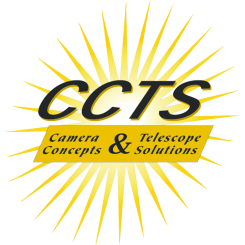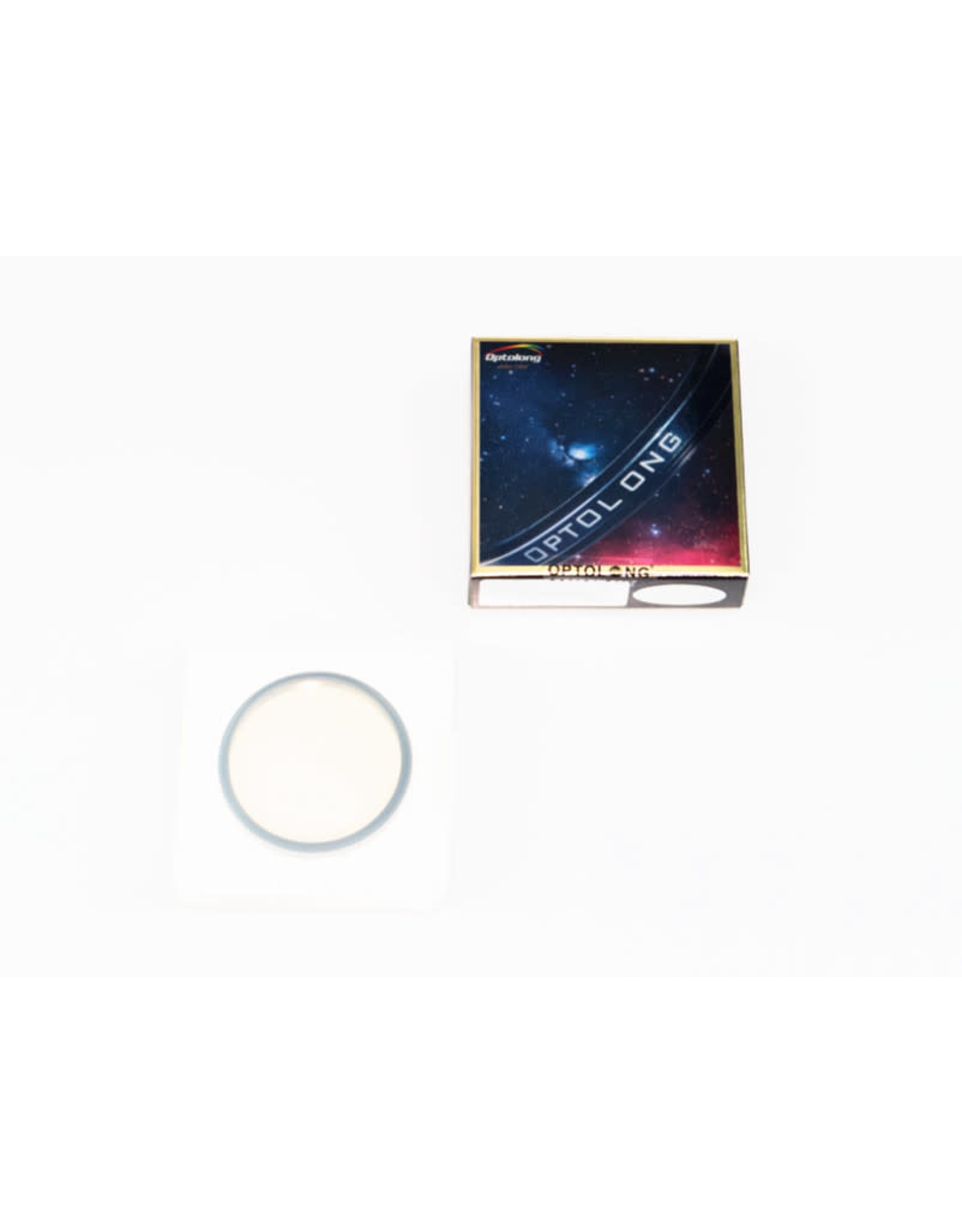Optolong L-eNhance Light Pollution EOS-C Clip Filter
| Article number: | EOS-C |
| Availability: | In stock |
| Delivery time: | In Stock! |
L-eNhance is a dual-band pass filter which has been designed for DSLR (digital SLR), color CMOS and monochrome CCD cameras. The convenience and cost effectiveness of this filter allows amateurs to image a rich selection of astronomical images, even in bright, heavily light-polluted areas. It effectively isolates the H-Alpha, H-Beta, and Oxygen III nebula emission lines and achieves a maximum transmission of up to 90%. The performance of this filter delivers images that superbly control.
1. L-eNhance Introduction
The relentless spread or urbanization and its associated light pollution have become a growing problem for all amateur astro photographers. The current solutions to the problem can be expensive and might include the purchase of a monochrome camera, several types of narrowband filters and a filter wheel.
Optolong L-eNhance provides an economical and practical solution for amateurs. It is a dual-band pass filter which has been designed for DSLR (digital SLR), color CMOS and monochrome CCD cameras. The convenience and cost effectiveness of this filter allows amateurs to image a rich selection of astronomical images, even in bright, heavily light-polluted areas. Optolong believes the design of our L-eNhance filter is a technical innovation among filters. It effectively isolates the H-Alpha, H-Beta, and Oxygen III nebula emission lines and achieves a maximum transmission of up to 90%. The performance of this filter delivers images that superbly control the impact from light polluted skies.
Hydrogen is the largest, the most primitive, the simplest, and the oldest element in the universe. Scientists consider that Hydrogen amounts to more than 90% of visible substance in space. Our sun is 5 billion years old, but so far hydrogen is still the key matter of nuclear fusion. While the sulfur element does not have much scientific significance, so keeping H and O is meaning for exploration of life.
Therefore, we highlight H-a, H-b, O3 and O2, and reduce the signal of sulfur.
2.Spectrum and Characteristic
Sbustrate: B270
Thickness: 1.85mm
Tpeak: T>90%
Blocking range: 300-1000nm
Blcoking depth: light pollution line blocking >99%
Surface quality: 60/40
Transmitted Wavefront RMS: λ/4
Parallelism: 30s

3. L-eNhance features
| Specifications | Applicable camera model | Applicable lens | Unit Price in US$ |
|---|---|---|---|
| 1.25" | M28.5*0.5 | / | $179 |
| 2" | M48*0.6 | / | $229 |
| EOS-C clip | 7D2/80D/800D/77D/70D/760D/750D/700D 650D/600D/550D/500D/400D/100D/1100D 1200D/1300D |
All EF lenses. But not suit for Canon EF-S lenses. |
$259 |
Waring:
For camera clips, we only test the popular lens in market. For any other lens , feel free to contact our customer service staff. We would like to extend our sincere thanks for your support and test data.
4. Manufacturing Technology
- High-precision grinding and polishing to make sure the substrate parallelism is greater than 30" and the surface accuracy is better than λ/4 ;
- Purified water ultrosonic clearning is aim to effectively remove impurities and dust from the substrate surface.
- Electron-beam gun evaporation with Ion-assisted deposition coating technology for durability and resistance to scratching, as well as stability on CWL(central wavelength) no deviation affected by temperature change; IAD not only consolidates membrane compactness, increases film firmness, but also changes vacuum coating material characteristics.
- Planetary rotation system offers precision and homegeneity of coating ensuring high value on transmission of pass-band and Optical density of off-band;
- Non-cementing optical substrate coating;
- Quality Control: each filters is examined by Spectrophotometer for spectrum characteristic, and Laser Interferometer for surface accuracy.

5. Packing
Outer Box: silve box
Plastic Box: PP material
Lining: imported high pressure white EVA material


2020 NEW PACKAGING

※NOTE:
New and old packaging replacement period, random delivery. Many thanks for your understanding.
6. L-eNhance Filter Performance
⭐The Flaming Star (IC 405) is an emission and reflection nebula identifiable in the constellation of Auriga, by Tommaso Massimo Stella
about 1,500 light years away from our solar system. The central star AE Aurigae, presumably "escaped" from the Orion
constellation 2.7 million years ago, it ionizes the gases of the nebula giving the characteristic reddish color.
The light of AE Aurigae (blue) is reflected on the dark dust producing the bluish areas that are seen in the center
image.
Shooting taken on February 15th and 16th 2020 in Maruggio (TARANTO-Italy) 10m a.s.l.
This image is dedicated to my daughter Laura.
Technical data
Lights: 112x300s @ 250 Gain (-15°C), 51 Dark, 84 Flat
Telescope: TS PhotoLine Apochromatic FPL53 Triplet 102 @ f/5.53
Camera: ZWO ASI 294mc Pro
Mount: Skywatcher AZ-EQ6 GT
Autoguide: ASI 224mc & Ultraguide 60
Filters: Optolong L-eNhance
Processing: DeepSkyStacker, Photoshop CC, PixInsight, AstraImage Plus
⭐The Tadpole Nebula (IC 410), by Tommaso Massimo Stella
The Tadpole Nebula (IC 410) can be identified in the southern part of the constellation of Auriga through the observation of the open star cluster (NGC 1893) around which the extensive region H II is visible in the image in various shades of red.
The main feature of this splendid formation are the two tadpole-like gas filaments that we can admire on the edge of
the bluish cavity that surrounds the star cluster.
Their extension is calculated in about 10 light years while the distance of the whole complex from our system solar is about 12400 light years.
Shooting taken on February 20th and 21th 2020 in Maruggio (TARANTO-Italy) 10m a.s.l.
Technical data
Lights: 98x300s @ 250 Gain (-15°C), 51 Dark, 42 Flat
Telescope: TS PhotoLine Apochromatic FPL53 Triplet 102 @ f/5.53
Camera: ZWO ASI 294mc Pro
Mount: Skywatcher AZ-EQ6 GT
Autoguide: ASI 224mc & Ultraguide 60
Filters: Optolong L-eNhance
Processing: DeepSkyStacker, Photoshop CC, PixInsight, AstraImage Plus
⭐Zoom on the tadpoles of the IC 410 nebula in the constellation of Auriga, by Tommaso Massimo Stella
The image has been reworked to simulate the Hubble palette. Unfortunately, lacking the information on the SII, it was not possible to obtain a perfect result but, from an aesthetic point of view, I think the photo is pleasant.
Technical data
Lights: 98x300s @ 250 Gain (-15°C), 51 Dark, 42 Flat
Telescope: TS PhotoLine Apochromatic FPL53 Triplet 102 @ f/5.53
Camera: ZWO ASI 294mc Pro
Mount: Skywatcher AZ-EQ6 GT
Autoguide: ASI 224mc & Ultraguide 60
Filters: Optolong L-eNhance
Processing: DeepSkyStacker, Photoshop CC, PixInsight, AstraImage Plus











